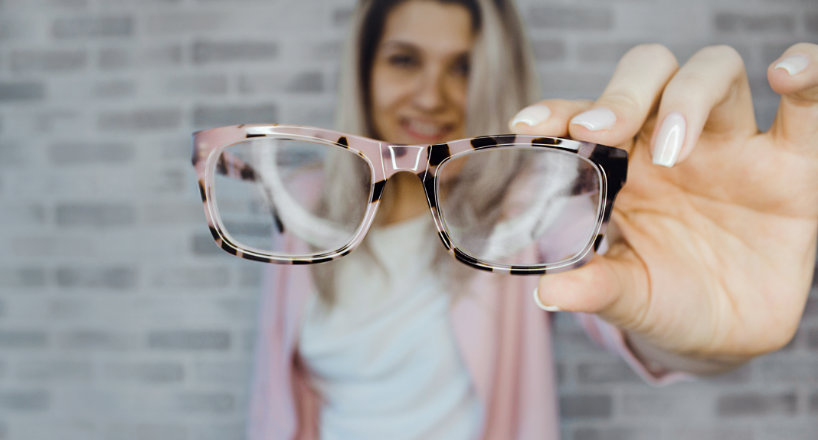There is no concern that as we age our body starts to compromise. We observe more pains and pains, our joints and bones weaken, and yes, our eyes and vision likewise begin to decrease. While we might start to see changes as early as our 40s, more quick wear and tear begins from age 60 and accelerates as we grow older.
Specific age-related eye and vision modifications are totally normal and do not represent the development of an illness. These consist of color vision loss, dry eyes, minimized contrast and night vision, student shrinking, and presbyopia. Cataracts are another age-associated condition that can cause blindness, however, are easily treated with a common eye surgical treatment. Regrettably, there are numerous other age-related illnesses that are a lot more major and can trigger irreversible vision loss and blindness, having a considerable impact on the lifestyle during the later years.

These consist of glaucoma, age-related macular degeneration, and diabetic retinopathy, 3 illness that affect millions of individuals around the world.
How the Eyes Changes As We Age
Subtle modifications in our vision and eye structure happen as we age. Some examples consist of:
Presbyopia
After age 40, many individuals begin to discover difficulty seeing close things– they need to hold books, menus, and even their cell phones even more away to see the text clearly. This is the sign of presbyopia, the hardening of the lens inside the eye which results in a loss of the ability to focus on near items.
Initially, it might suffice to hold things at an arm’s length to see clearly however eventually, you will most likely seek a much better option, particularly reading glasses or multifocal glasses, or contact lenses. If you are actually bothered by wearing glasses or contacts and your eyes are otherwise healthy, surgical treatment to replace the lens could be a possibility.

Talk to your eye doctor about your choices and the very best solution for you.
Color Vision Loss
Color vision is made possible by retina cells which start to weaken as we age. As an outcome colors appear duller and the contrast between colors is decreased. While many people don’t observe this subtle modification, people who are quite attuned to color will discover a reduction in color distinction, particularly in the blue palette.
Shrinking of the Pupil
As we age, the muscles in the eye which control the reaction and size of the student start to weaken. This makes the pupils less responsive to modifications in light, making it typical for individuals over 60 to need more light to see clearly. It might likewise make glare and bright sunshine more problematic. Photochromic lenses (which darken when you enter the sunshine) and an anti-reflective, anti-glare lens covering can be useful to lower the sensitivity.

Dry Eyes
As we age, our eye ducts produce fewer tears, especially in postmenopausal women. Dry eyes can cause eyes to feel dry, red, irritated, and gritty and often trigger excessive tearing. If you have any of these signs you must see your eye doctor for treatment, which can consist of eye drops or prescription medication along with treatments to release or clear the obstructed tear ducts.
Minimized Peripheral Vision
As we age, the peripheral field of vision starts to narrow decreasing the size of the visual field progressively with time. While absolutely normal, this can be of specific concern when it concerns driving as the reduced range of vision increases the threat of accidents. People should understand this and make a larger effort to scan their environments while driving.
Vitreous Detachment
The vitreous is a gel-like compound within the eye that starts to pull away from the retina as we age.

This can cause visual symptoms such as spots, floaters, and flashes of light in the field of vision. While vitreous detachment is normally not a cause for issue, floaters and flashes of light can also be a sign of the start of a retinal detachment– a very severe condition that can result in loss of sight if not treated immediately. If you experience any of these signs, contact your eye doctor immediately.
Cataracts
Cataracts are among the most typical eye conditions in the older population, in the truth about half of Americans 65 years and older have some extent of cataract development. As the eye ages, the natural lens begins to cloud, decreasing clear vision. Cataracts are typically treated with a typical surgical procedure that eliminates the lens and replaces it with a clear, synthetic lens. Today, cataract surgery is extremely safe and efficient, normally achieving success at restoring complete vision.
If a client likewise has presbyopia, there might be the choice to place a multifocal lens in the eye to repair both concerns at once.
Eye Diseases Associated with Age
There are a variety of severe eye diseases that are connected with age including:
Glaucoma
The danger of developing glaucoma, a major eye illness that triggers progressive damage to the optic nerve, increases as you age. In truth, there is a 12% danger of establishing the illness at age 80. When discovered and dealt with early, glaucoma can be controlled through medication or surgery, avoiding vision loss. Nevertheless, as soon as vision is lost it can not be restored, and frequently the disease advances quickly without lots of symptoms. It’s important to have routine eye exams to detect and treat glaucoma early prior to vision loss occurs.
Age-Related Macular Degeneration (AMD)
Age-related macular degeneration (AMD) is a leading cause of blindness worldwide.
AMD happens when the macula in the eye progressively breaks down triggering vision loss, particularly in the center field of view. While there is no recognized remedy yet for AMD, early detection and treatment may slow the development of the illness and stabilize it enough to avoid vision loss.
Diabetic Retinopathy
Diabetic retinopathy is a vision-threatening condition triggered by the deterioration of the retina in individuals with diabetes. It’s currently approximated that 40% of people over 40 who have diabetes have some degree of diabetic retinopathy and one out of every 12 has actually advanced vision-threatening retinopathy. In order to prevent permanent vision loss it is necessary to manage diabetes and insulin levels. In addition to their regular diabetes doctor, patients with diabetes need to have routine eye examinations to monitor the status of the retina and the vision.
What Can Be Done About Age-Related Vision Changes?
There are lots of ways to avoid vision loss associated with age.
Preserving a healthy diet plan, working out routinely, not cigarette smoking, securing your eyes from UV rays, and handling stress are all terrific places to begin. Even more, understanding your household history and your individual threat elements will assist you to take the needed steps to protect your eyes. Lastly, schedule routine eye examinations with your optometrist to ensure that your eyes are healthy, supply you with optimal vision and catch any diseases beginning to establish in the early stages.